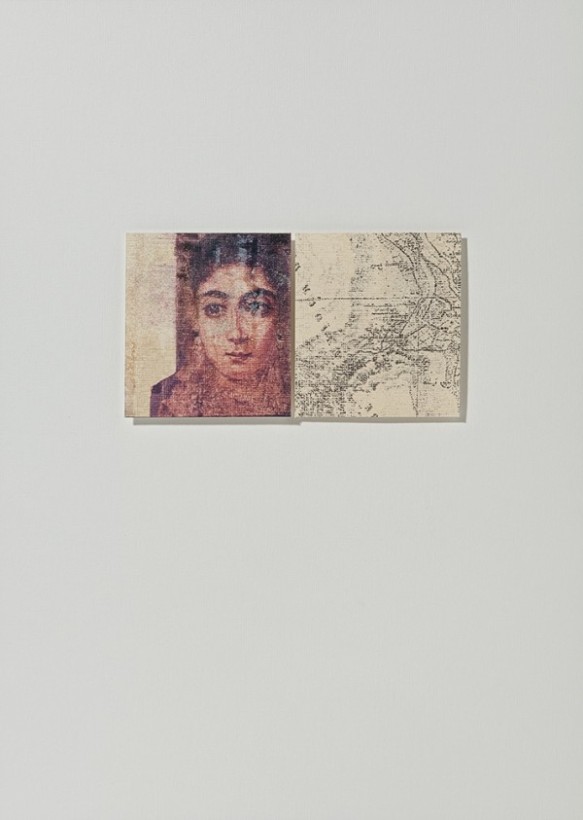Sandra Kontos moved to Athens in 1993 to pursue her studies in archaeology and photography. Photography and archaeology share many qualities, namely they both record or archive the past. It was during this time she discovered the Fayum portraits (first and second centuries A.D.) They fascinated her, “Here I found myself gazing directly into the eyes of people from the ancient world.” Captivated by their melancholic beauty and the mystery surrounding their ancient faces, dress and jewellery, Kontos intensely studied these exquisite portraits. The portraits accompany mummified bodies and were painted on wooden panels by anonymous artists. Euphrosyne C. Doxiadis writes, “Of these two strands [the Greek painting tradition and Egyptian funerary beliefs], the sophistication of the first and the intensity of the second combined to produce moments of breathtaking beauty and unsettling presence.” [1]
Almost a decade later, whilst studying at UNSW COFA, Sandra Kontos experimented with Polaroid transfers. This photographic image transfer process was time consuming and produced fragile unpredictable images. The materiality of the results was a stark reminder of the textured surfaces of the Fayum portraits. Kontos paired the portraits with tea stained replicated maps of the Fayum region. The Fayum “… as it appeared c.1800, when it was surveyed by Napoleon’s Commission. This map, from the Descriptionde l’Egypte, vividly suggests the lush cultivated land, with its small fields, surrounded by rocky escarpments.” [2] This was a definite nod to her Athens days and the magnificent lessons of her archaeological teacher Aggeliki Papadopoulou. Pairing the portraits with the map was also a way of memorializing the dead; of establishing a sense of place for those depicted. An act of making the absent present.
With the discontinuation of Polaroid, this series of portraits now sit precariously in the digital age. The colours of Polaroid 669 film and the tea stained paper stock are unreproducible. These portraits are what Kontos loves about analogue photography. “The process is slow and vivid, random elements are revealed and they are unique objects imbued with the hand of the artist.” Geoffrey Batchen talks about rediscovering photography in the digital age. Sandra Kontos’ photographs are chemical events, actions that occur directly onto the paper stock. [3] The images are made not taken.

Sandra Kontos, Fayum Portrait, 2004
References
[1] The Metropolitan Museum of Art, 2000, Ancient Faces: Mummy Portraits From Roman Egypt, accessed 22 December 2015, http://www.metmuseum.org/about-the-museum/press-room/exhibitions/2000/ancient-faces-mummy-portraits-from-roman-egypt
[2] Doxiadis, Euphrosyne, The Mysterious Fayum Portraits Faces from Ancient Egypt, Thames & Hudson, 1995, p. 228.
[3] Batchen, Geoffrey. Blindness and Insight: Photography and/as Ruin, Symposium – The Alchemists: Rediscovering Photography in the Age of the Jpeg, SCA Auditorium, Sydney College of the Arts, The University of Sydney, 5 December 2015, Keynote Address.
